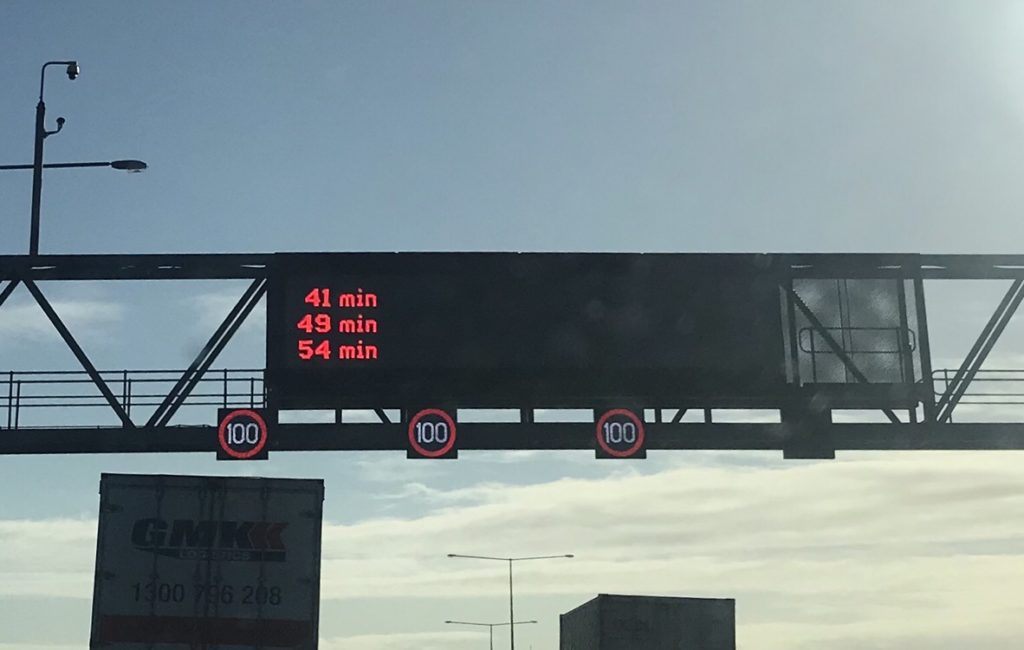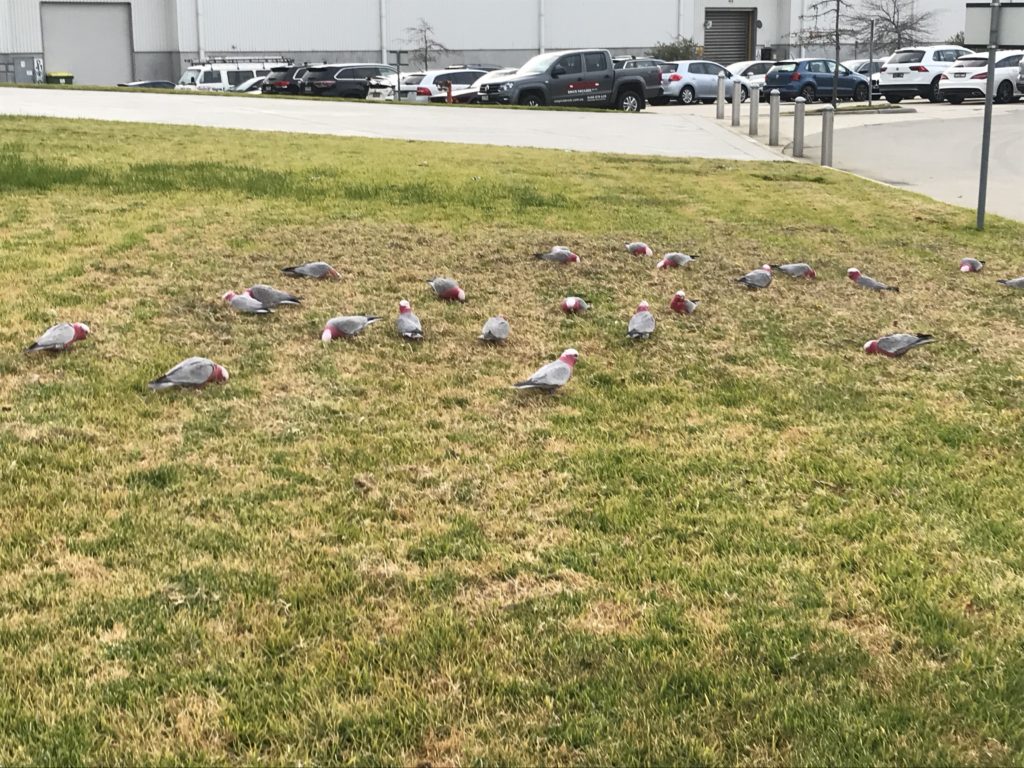Quickshot: West Footscray Fire
View of this morning’s West Footscray factory fire, while sitting in the traffic jam it caused. The plume of smoke was visible from where I entered the M1 at North Geelong, about 80 kilometres away.



View of this morning’s West Footscray factory fire, while sitting in the traffic jam it caused. The plume of smoke was visible from where I entered the M1 at North Geelong, about 80 kilometres away.


Say what you like about the mandatory inclusion of the halo device in Formula 1 in 2018, but in last night’s Belgian Grand Prix, it probably saved the life of Charles LeClerc.
The black marks all over the halo are where Fernando Alonso’s McLaren landed on LeClerc’s Sauber after a massive first corner incident.
Let there be no more complaints about the halo – okay?


On the Belgian Grand Prix weekend, in the midst of the second turbo-era of Formula One, I thought it might be interesting to look back at the “big little” BMW turbo engine of the early 1980’s.
And it has a birthright you just might not expect!
The labels aren’t showing due to the flickering of the screen versus the speed of the camera lens in my phone, but these were the travel times on the Western Ring Road this morning.

Travel times were Ballarat Road to, respectively, Keilor Park Drive, the Tullamarine Freeway, and the Hume Freeway.
Such fun!
I have never been the kind of person who believes in “regrets”. I believe the whole concept of “regret” is a wasted emotion.
Undoubtedly, we all have incidents in our past where we might wish we had done things just a little differently. We might have zigged when we could have zagged, failed to tell someone we loved them when we really did.
Even if we tried to.

Such events could easily feel like “regrets”, but for a long time I have chosen not to live that way.
Holding or keeping a regret is just looking to the past, and there is no future in that. There is simply no possible way we can go back and fix those things, so why should we worry about them?
We can make amends, or do things better the next time around, but we can never go back and fix things “the first time around”.
There have been many things in my life that most people would not hesitate to categorise as a “regret”.
I choose to see them as learning experiences, as chances to grow, and as opportunities to learn about myself and how I react in certain situations. Perhaps so I get to learn how to do them better the next time around.
These situations have in many cases caused me deep emotional pain, even over extended periods of time – but I still refuse to view them as bad experiences.
They are responsible for who I am, and without the pain, and without the anguish, I would not have learnt from those experiences. I would not have learnt who I am.
I am the proudest father of the most amazing daughter in the world. I would not have come to be her father without having made some quite poor decisions.
Not that I am saying that getting into a relationship with her mother – (which has since ceased) – was a stupid thing – far from it. I would never have met her mother if I hadn’t gone through a crazy set of decisions that set me back significantly.
If I hadn’t have left my first IT job at the end of 1998 to take up what at the time seemed like an amazing opportunity – (but wasn’t) – with IBM.
If hadn’t then subsequently left that job in the wake of the breakup of the other serious relationship in my life, then I would never have found myself working with the future mother of my daughter.
If I had my time over, I would have stayed with that first IT job for a lot longer. As a result, it is quite possible – (and probably likely) – that I would never have met her, and my daughter as she is now, would never have come to be.
I have no doubt I would have met someone else, and probably had a family with that someone else – but that first child would have been a completely different person.
They all might have been poor choices, but at the end of it all, I’m in a wonderful place.
That’s why regrets are stupid – even the worst choices we ever made can lead us to where we are meant to be.
Some call it destiny. I call it “life”.
Over the last few years of my life, a lot of things have changed. Many of those things have adversely and/or positively affected my headspace.
My mental health – (while generally pretty good) – has had its difficult times.
I’ve found over the last few years that writing about how I feel when I’m having trouble has helped a great deal – but I’ve generally kept that writing under lock and key. Much of it is deeply personal, and won’t ever see the public light of day.
Lately I’ve found that after writing about most of the really complicated stuff in my head, I’ve found myself wanting and needing to write more, but not having anything specific to write about.
So I’ve decided that every now and then, I’m going to write a short piece about how I have managed to put myself back together after a difficult few years following my separation from the mother of my wonderful daughter.
There won’t be specific pieces of “juicy stuff” – just short essays on how I view my life and the world now. I don’t even know how long I will do this for.
I just want to give it a bash – and if I can help others struggling with mental health issues, well then that would be perfect.
If you’re not struggling with your own issues – remember to look out for the other people in your life. Most people bottle things up when they hit tough times, and that’s a lot of the problem.
Check on them – sometimes they just need someone to ask if they are okay.
With the return of my website, I’m also bringing back my “Sunday Nerding” series. I try to sit down every Sunday and watch something truly interesting, and typically nerdy. I don’t and won’t manage it every Sunday, but it’s a ritual I enjoy during my weekend downtime.
First up, a fascinating BBC documentary from 2016 about data, data collection, and how it can, how it does, and how it will continue change the world we live in.
The local galahs certainly seem to enjoy the lawn in front of the office, and regularly visit to brighten up the very chilly mornings around here of late!

With the advent of modern web browsers flagging all non-HTTPS web traffic as “not secure”, I have a few tips on what to do if you are running a website. Google announced the change some months ago, and Mozilla is following suit with their key products also.
If you are running a website, and you don’t run HTTPS and don’t enforce HTTPS by default, this affects you.
You need to fix it.
Modern web browsers typically upgrade themselves automatically. As such, all of your users will soon receive warnings that show your HTTP website as being “not secure”. They are going to complain.

HTTPS is a secure, encrypted version of the original HTTP protocol, instigated by Tim Berners-Lee. When he started developing the world wide web in the early 1990s, the security of the transmission of the data wasn’t considered too important.
Not many people were on the internet, and most of the people who were were considered “trustworthy”.
This has changed – and the switch to HTTPS – which basically takes HTTP, and wraps it up in an encrypted stream of data designed to prevent snooping of the traffic as it crosses the internet is absolutely the “new black” of the internet.
One of the biggest barriers to HTTPS uptake has been the cost of obtaining SSL certificates. They can and do cost several hundreds of dollars for certificates that expire – (typically) – every two years. Such costs are prohibitive for many people, particularly bloggers and small businesses who can’t justify that cost.
Along came Let’s Encrypt, an issuer of free SSL/TLS certificates and sponsored by many industry heavyweights.
The arrival of Let’s Encrypt has sparked a massive surge in the uptake of HTTPS by websites, and now more than half of the webpages on the internet are available using HTTPS. This is a huge win for internet users, keeping their communications encrypted and secure when browsing sites with HTTPS switched on.
And because their certificates are free, the barriers holding many people up from making the switch are mostly gone. They do expire every 90 days, but most web hosting companies have embraced them, and have automated mechanisms for the renewal of the certificates without human intervention.
I recently got into an (somewhat heated) online discussion about the right and wrong ways to implement HTTPS. A common mistake I have seen is where the HTTP content of the website and the secured HTTPS content is served from the same document root.
This is bad.
Even if you move to HTTPS, and your content is still available via HTTP, people can still be directed to your site via HTTP. Old links to your site from someone else’s site can send your visitor via HTTP. This leaves them using HTTP for their entire visit.
Ensure that you ONLY serve your content via HTTPS. Point the “HTTP version” of your website to a different document root. From that document root, redirect all HTTP requests to the HTTPS document root.
Here’s how I do it – (note that this is for an Apache web server with PHP):
Firstly, in the exclusive HTTP document root, place an “.htaccess” file with the following content:
RewriteEngine on
RewriteCond %{REQUEST_FILENAME} !-d
RewriteCond %{REQUEST_FILENAME} !-f
RewriteRule ^(.*)$ index.php?q=$1 [L,QSA]
This serves to send every single request, regardless of the full URL to the file “index.php”. This file should contain the following (inside normal PHP start and finish tags):
@header("Location: https://michaelwyres.com.au".$_SERVER['REQUEST_URI']."",TRUE,301);
This will ensure that all requests to “http://michaelwyres.com.au/whatever-url/” are picked up and sent to “https://michaelwyres.com.au/whatever-url/”, including pages that do not exist.
In this way, if inbound links are still listing HTTP, or your visitor explicitly requests HTTP, it will be trapped and dumped to the HTTPS version of your site. It becomes impossible for people to browse your content using HTTP.
